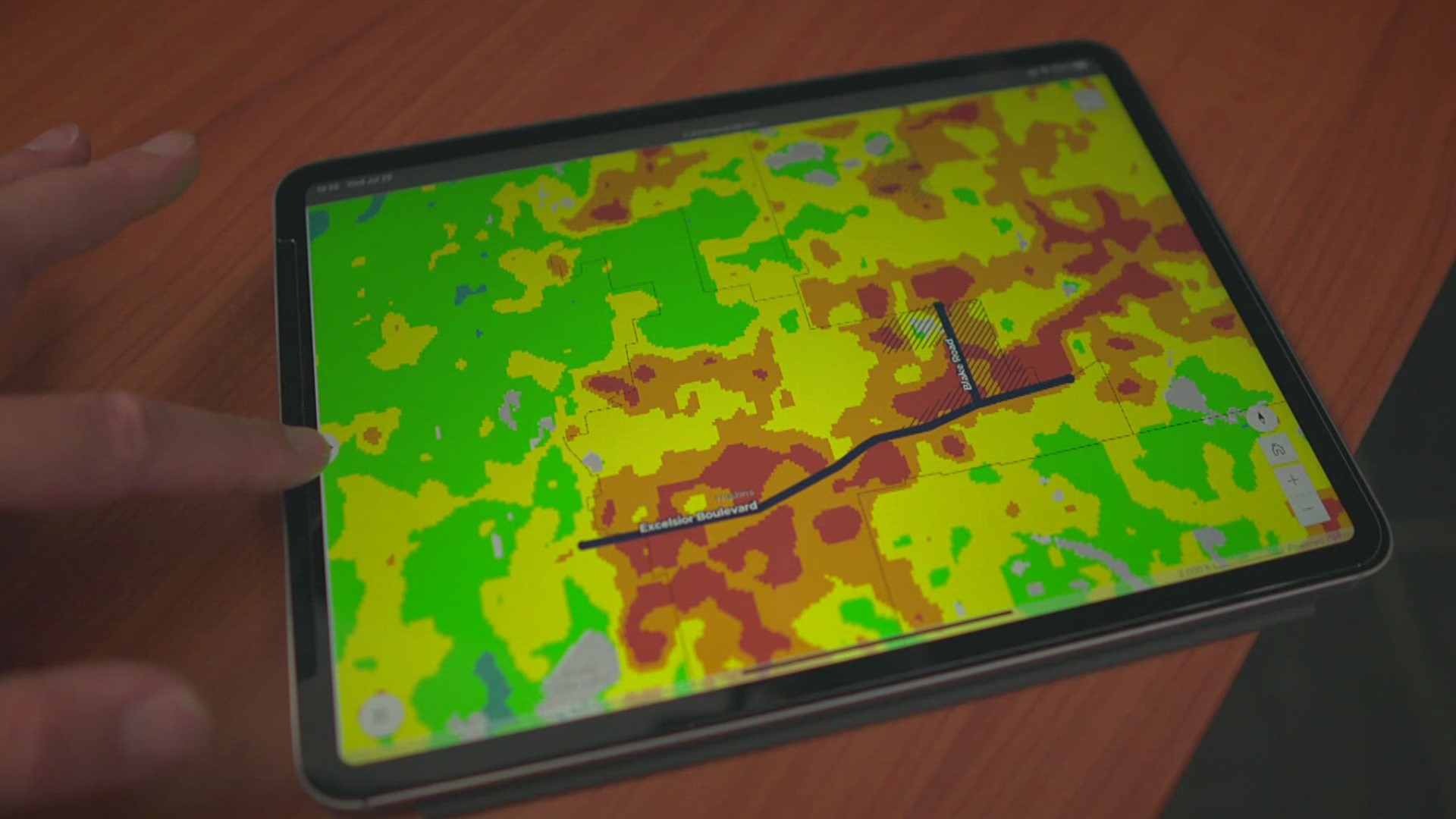HOPKINS, Minn. — The city of Hopkins is using data from NASA to track ground heat and create new ways to keep its most vulnerable residents cool.
Any city can access the data that is compiled by the Metropolitan Council. Hopkins’ leaders then performed its own study to explore how heat impacts people who live in the city. It found that Blake Road and Excelsior Boulevard corridors tend to be hotter than other parts of the city.
To plan for community safety, the city is employing strategies to beat the heat.
“You need strategies that are thoughtful, aggressive in terms of how we’re making decisions and that we’re making those decisions over time,” said Hopkins Mayor Patrick Hanlon.
Some people are more vulnerable to heat and Hanlon says the study found communities of color are considered the most vulnerable to extreme heat. It’s typically in areas where there is multi-family housing, low vegetative coverage and pavement.
“And so as a policy maker, that’s concerning for me,” said Hanlon.
Climatologists predict another 20 days a year above 90 degrees in the next three decades.
The city’s next step is to strengthen the resilience of residents and businesses.
“The city of Hopkins is actually turning that information, that data, into action,” said Metropolitan Council analyst Eric Wojchik.
The city has plans to plant drought-resistant grass to build weather-resistant rec spaces, as well as improve access to trees and native plants.
It also wants to reduce surfaces that can’t absorb water, like concrete.
Changing construction materials can also reduce the environment’s contributions to high heat, including green roofs and awnings.
Hopkins even has a climate solutions fund – it’s a federally funded grant meant for residents ready to implement these changes.
“We'll give them even more money to put in projects like solar, or insulation, and other things to make their buildings more resilient,” said PeggySue Imihy Bean, the city’s special projects and initiatives manager. “It isn’t until days like today where you’re really thinking about how hot it is and trying to get out of it.”
The city is also preparing a master parks plan. It’s proposing redesigning seven of its 14 parks in the next 20 years. It’s in the process of gathering community input and using some of these new strategies to prepare for a hotter future.
“We built our way into some of the heat problems we're experiencing, but we can also build our way out of those issues,” said Wojchik.
Without changes, heat islands, like the areas in Hopkins can be up to 15 degrees hotter than other spots.
The Metropolitan Council hopes other cities use this data like Hopkins has and create new policies and strategies to beat the heat.
Watch more local news:
Watch the latest local news from the Twin Cities and across Minnesota in our YouTube playlist:
WATCH MORE ON KARE 11+
Download the free KARE 11+ app for Roku, Fire TV, Apple TV and other smart TV platforms to watch more from KARE 11 anytime! The KARE 11+ app includes live streams of all of KARE 11's newscasts. You'll also find on-demand replays of newscasts; the latest from KARE 11 Investigates, Breaking the News and the Land of 10,000 Stories; exclusive programs like Verify and HeartThreads; and Minnesota sports talk from our partners at Locked On Minnesota.
- Add KARE 11+ on Roku here or by searching for KARE 11 in the Roku Channel Store.
- Add KARE 11+ on Fire TV here or by searching for KARE 11 in the Amazon App Store.
- Learn more about the KARE 11+ app for Apple TV in the Apple App Store.
- Learn more about KARE 11+ here.

